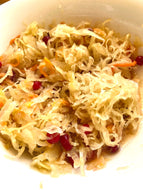Collection: Snack Food (appetisers, starters, entrees)
Russians call it ZAKUSKA or PEREKUS
Zakuska is a general word for appetizers, starters, entrees, hors d'oeuvres, however, in most cases, it is the food, which accompanies vodka and other strong drinks like whisky, cognac or brandy.
The word zakuska became popular in Russia in the 18th century. At first, it was a synonym for breakfast. According to tradition, it consisted of cold dishes only. Leftovers from the previous night’s dinner were also welcome. Later on, the word zakuska was applied to all cold dishes of Russian cuisine.
The most authentic Russian zakuska are the following:
– pickled fare (cabbage, cucumbers, mushrooms, tomatoes)
– salted fish (sturgeon, salmon, caviar)
– smoked meat (ham, poultry, cold-boiled pork).
In the 19th century, the list grew longer thanks to kholodets . Some European entrees also became zakuska, like French pate and marinated vegetables and German "bread and butter." The 20th century brought more pickled fare, along with canned fish, olives and pickled salads. Russians still do their own pickling at home and at their dachas (summerhouses).
The advantages of zakuska
The way zakuska is served has evolved over the years. At first, zakuska were served long before lunch or dinner and consisted of two or three dishes and vodka. Over the years they were consumed in increasingly closer proximity to dinner and by the late 19th century became an inseparable part of the dinner itself. The three basic ingredients remained unchanged - fish, meat and vegetables.
Perhaps the main vehicle keeping zakuska popular is strong drink, which requires some light food as a chaser to avoid getting drunk. Few Russians sip on drinks - they simply don't know how. They drink vodka and other drinks by shots. And zakuska is the prime assistant in this business.
There is a Russian saying that says "kogda p'esh, zakusyvat'nado" (when you drink, you should have some zakuska). Keeping in line with it the Russian drinking culture has produced some drinking and eating combinations the world has never known before. Some examples are cognac with herring or kholodets, port wine with sprats and whisky with pickled cucumbers.
Pick your favourite
Today notions of strong drink and zakuska are inseparable - during Russian parties, people usually sit at the table and have vodka and zakuska for an hour or two - sometimes longer. And only then are they ready for the main course.
Listed below are some of the most popular Russian zakuska to accompany vodka:
– pickled cucumbers and tomatoes:
– herring with onions;
– pickled mushrooms with onions;
– cold salty salmon;
– cold pickled cabbage (something like German sauerkraut)
– kholodets and fish aspic;
– vinaigrette( a mix of beetroots, pickled cucumbers, onions);
– onions marinated in vinegar;
– a can of Baltic sprats on rye bread with onions;
– caviar on bread with butter;
– Russian meat salad with slices of meat or chicken, pickled cucumbers, green peas and mayonnaise (or sour cream)
-
Marinated mushrooms Gruzdi, Opyata, Maslyata, Assorti 580g
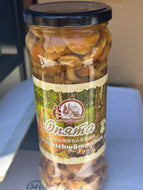
- Regular price
- $12.00
- Sale price
- $12.00
-
BEEF PORK TURKEY STEW, PORK STEW assorted Tushyonka
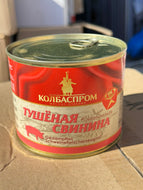
- Regular price
- $12.00
- Sale price
- $12.00
-
Uncle Vanya Zucchini Squash spread 460 ml jar
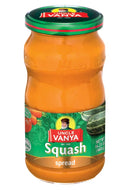
- Regular price
- $7.60
- Sale price
- $7.60
-
Emela Ikra Zucchini, Eggplant spread 720g Икра заморская
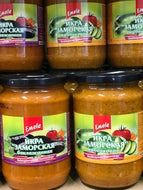
- Regular price
- $12.00
- Sale price
- $12.00
-
Preserved cherry tomatoes with dill & hot, mix with cucumbers 1L glass jar
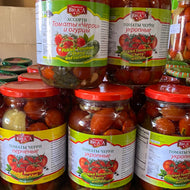
- Regular price
- $10.50
- Sale price
- $10.50
-
MIMINO Sauce Tkemali Adjika assorted - Соус Ткемали
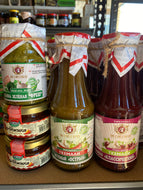 Sale
Sale- Regular price
- $8.50
- Sale price
- $8.00
-
Babkiny Sunflower seeds roasted
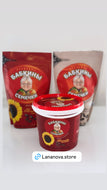
- Regular price
- $9.00
- Sale price
- $9.00
-
Cucumbers Babushkiny crunchy with garlic & dill 900g
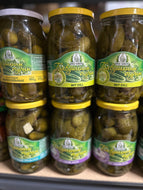
- Regular price
- $8.00
- Sale price
- $8.00
-
Carrot morkov po koreiski hot with garlic 480g
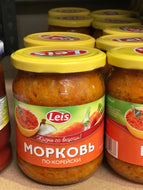
- Regular price
- $5.00
- Sale price
- $5.00
-
Mushrooms URA! shiitake gruzdi in salty garlic brine Maslyata Assorted
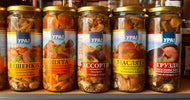 Sale
Sale- Regular price
- $13.50
- Sale price
- $9.00
-
Pickled crunchy cucumbers 900g with garlic dill
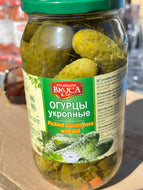
- Regular price
- $10.50
- Sale price
- $10.50
-
Poultry pate 130g ULAN

- Regular price
- $4.00
- Sale price
- $4.00
-
King Oscar Icelandic Cod Liver Ocean Fresh 121g 190g
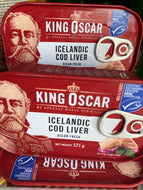
- Regular price
- $9.60
- Sale price
- $9.60
-
Uncle Vanya Roasted Zucchini Tbilisi style with adzhika 460 ml jar
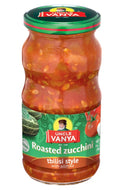
- Regular price
- $7.00
- Sale price
- $7.00
-
Kedainiu Adjika Sauce 260g Lithuania
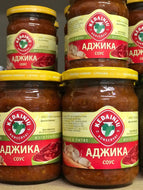
- Regular price
- $4.00
- Sale price
- $4.00
- Page 1 of 4
- Next page











